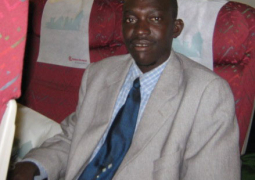Jean Hatzfeld, 2003, 238 Pages
I have read many books and journals articles on the nasty 1994 Rwandan genocide including the classics by Phillip Gourevitch, Gerard Pruinier, but this one by Malagasy journalist is unique in that it gives voice to the killers, the mass murderers called the interahamwe in the local Kinyarwanda language. Most of the thousands of books, films, newspaper and academic journals on this genocide perpetrated by the Hutu against the Tutsi in 1994 focused on the origins, course and other ugly scenarios, and the survivors or refugees. But this book gives the parole to the men and women who killed, killed and killed up to i million Tutsi in a period of 100 days in April to June 1994.
From this book, we learn that the killings were done not by trained soldiers, but ordinary farmers, clerks, mayors, bar owners and drifters many of whom had never killed before, and who up to that fateful April 4 1994 when the volcano of hatred erupted, lived nicely with their Tutsi neighbours. Then suddenly, cutlasses which used to cut grass and coffee beans were now killing tools. Few guns were ever used in the genocide. Machetes, cheap and easy to carry and hide did the nasty mass murder.
The author traces some of the jailed confessed killers to their prison cells and interviews them: he wanted to know what made good men become cold killers of their neighbours overnight. All the men he spoke to confessed to murders, and many were contrite but most were expressionless, meaning that they did not regret their cowardly deeds. This is explained by the strong dose of hatred which the media controlled by the Hutu extremists such as Radio Milles Collines diffused to the public. No doubt certain nasty journalists such as Hasan Ngeze of the Hutu racist press are to die in jail following his sentencing by the Rwanda tribunal last year.
This was one reason why ordinary bakers, fishers, teachers were overnight turned into professional murderes. In some instances, the killers recount how they fed in goat meat, drank wine and sang Hutu extremist songs before starting their attacks on Tutsis, p.6, 8.
Such was the wanton callousness of the genocide which Hatzfeld’s book has brought out very well.
This is an excellent book. It is highly recommended for the general public, especially students of history and politics for it gives an insight into the brutality of our age, the genocide in Rwanda in 1994.
Available at Timbooktoo, Tel: 4494345


